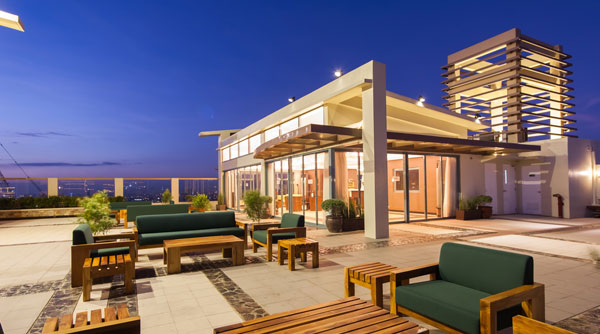These days, people planning to move into a new home find that landed houses—either in gated communities or residential subdivisions in Metro Manila—have become more expensive and difficult to come by. Thus, the construction of residential condominiums continues to rise instead as demand increases for these kinds of dwellings.
If you live in one of those high-rise structures, make sure you are aware of fire-prevention and safety measures. This is very important as these types of dwellings generally host a high number of people, and negotiating your way out of a building in the event of fire is trickier, not to mention more dangerous. Here then are various tips, shared by firefighters during fire-safety seminars, which could save your life.
Planning Ahead
1. Choose Your Unit Well
Choose a unit with a door near a fire sprinkler and, if possible, don’t get a condo unit higher than the 15th floor. Evacuation would be more difficult in case of emergency as firefighter’s ladders can only reach a certain height.
2. Get Inspected
Have your condo unit inspected by your city or municipal fire-safety inspectors and follow their recommendations to the letter. Post important numbers (fire, police, hospital, etc.) near your phone.
3. Proper Fire-Fighting Equipment Can Save Your Life
Get proper fire-fighting equipment especially a portable fire extinguisher. Note that using water can be dangerous in certain situations. Most residential buildings only purchase extinguishers rated for class A fires (caused by common combustibles like paper and wood), so to be safe, buy your own and go for one with a combination rating for ABC fires. Class B is for fires caused by grease, oil, and other chemically treated materials, while class C extinguishers are for electrical fires. In addition, keep smoke detectors in good condition. Test them monthly and change batteries twice a year.
4. Remove Fire Hazards
Remove fire hazards, especially those that block exits. Store Christmas lights properly immediately after the season ends, and be careful about throwing cigarette butts anywhere within the building. If you notice piled-up trash obstructing stairs and doors leading to the emergency exits, report it immediately to the building manager.
5. Get Yourself Familiarized with Your Building
Study your floor’s location map. Be familiar with the floor’s layout, all stair exits, and fire alarm boxes. Count the number of doors between your unit and the nearest exit in case you have to find it in the dark. Also, check emergency lights in the hallways: one should point toward the hallway and another should face the stairs. Heavily populated buildings must have 12V units because they last 4–6 hours longer than 6V units.
6. Home Is Where Safety Begins
Plan and practice a fire drill exit with your family and assign a meeting place outside the building. In addition, place your front-door key (or keys) where every member of your family can easily find it. You should be able to find it easily in case you need to exit your unit during emergencies, as you may need it to re-enter your unit when the emergency passes. As always, be mindful of other basic fire-safety procedures inside the home: be careful in the kitchen, never leave your cooking unattended, and check electric wires for fraying.
Surviving a Fire
In the unfortunate event that your building catches fire:
1. Evaluate the Situation
Call the fire department and give them details on what’s happening as the premature use of a fire hose can create unnecessary water damage when false alarms happen. For instance, a fire alarm may sound but there is no smoke anywhere.
2. Be Vigilant
Stay in your unit if all possible exits are blocked and cover all smoke passages with damp cloth. Turn off your air conditioner because it will suck smoke from outside. Call the fire department to give your exact location or wave a bright cloth outside your window. If your unit is near the ground and has grills on the windows, try getting out using the hole in the wall where your air conditioning unit is installed.
3. Be Safe
Crawl under smoke when evacuating, as you’ll find more air to breathe there. Bring a flashlight and use the stairs, not the elevator, because power might suddenly go out. While on the stairs, avoid causing counter flow that may lead to accidents. Don’t go back for your mobile phone or jewelry if they fall while you’re moving. Just make your way outside as quickly as possible. If the fire is located on a lower floor and there’s no way to go down, go up the building and wait for rescue. Bring a wet towel to cover your face and a wet blanket for your body. Wear sneakers instead of rubber or plastic slippers as the latter may easily melt from the heat.
4. And Once Outside…
Keep calm and wait for help. Do not re-enter the building until the fire fighters declare it safe.
You have a responsibility not only to keep your condo unit but also your building fire-safe. Being aware of the things you need to do can mean life and death for yourself and your neighbors.
Like What you've read?
If so, please join our newsletter and receive exclusive weekly home buying tips, financing guides and Philippine real estate news. Enter your email and click Send Me Free Updates











